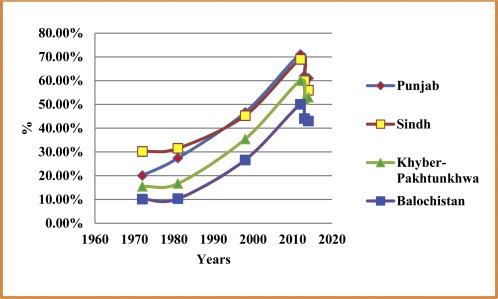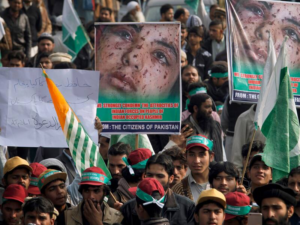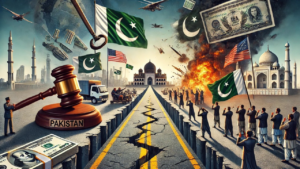
The illiteracy rate in Pakistan has continued to increase even as the government expenditure on education has shown a decline. The share of Pakistani nationals who can read and write has struggled to cross 60 percent of the total population. This means a major chunk of Pakistani people are still illiterate, which is the worst among Pakistan’s peers. Pakistan is suffering from the lowest rates of literacy, which has contributed to its demotion to the ‘low human development’ category by the United Nations.
Education expert Dr Farid Panjwani said war-stricken Gaza has managed to maintain a good literacy rate despite challenges, but the independent nation of Pakistan is struggling. “There is an education emergency in the country, but nobody is willing to address it,” said Baela Raza Jamil, a renowned educationist and a member of the UNESCO IBE Council.
One in three Pakistanis is illiterate, and the country fares poorly on all important quality-of-life indicators. Pakistan ranked 164th in the latest Human Development Index (HDI). Lack of resources and funds, exponential population growth, absence of qualified teachers, increasing poverty, and outdated curriculum are major factors that have deteriorated Pakistan’s prospects of improving its literacy rate.
Interestingly, Pakistan’s Planning and Development Minister Ahsan Iqbal admitted that the government efforts failed to improve literacy in the country. He said decentralisation of education rather had had a negative effect on literacy as over 25 million children were still deprived of education. “Education reforms are necessary, but they will not be effective until teacher training is improved,” he said.
These factors have also contributed to the rising number of school dropouts. “Many parents prioritise earning money over education, believing that their children can earn more by working than by attending school,” said education expert Rana Liaquat Ali. According to the Economic Survey 2023-34, 73 percent of students fail to complete secondary education. “Addressing out-of-school children is one of the foremost challenges confronting the education sector,” the survey admitted.
Islamabad government has failed to address the problem of the soaring population that has increased illiteracy, said Dr Zafar Khan Safdar, political science professor at Quaid e Azam University. “More important a result than any other is that the population explosion is the key reason for illiteracy in Pakistan. The government cannot ignore or shelve the problem of population explosion, for it is a rot,” he said.
The literacy rate among women is concerning. It is 49 percent for Pakistan– 29 percent for Balochistan and 25 percent for Khyber Pakhtunkhwa. Girls in Pakistan do not have access to schools, which results in dropouts, thus deteriorating literacy rate, said educationist Saira Samo. “Educating women has been the top priority of successful countries. Pakistan still lags far behind in the context of women’s literacy,” she said.
Despite the poor literacy rate, the Islamabad government has cut expenditure on education. The cumulative education expenditure was just 1.5 percent of the GDP in 2023. It was 1.7 percent a year ago. Pakistani lawmakers even showed no interest in discussions on education. A sitting in the Khyber-Pakhtunkhwa Assembly had to be adjourned as a quorum could not be formed due to a lack of lawmakers in the house.
Expressing concern over government apathy, Jamil said she never saw any senior bureaucrat visiting schools daily and on holidays. “Education is a wicked problem, multiplied with a runaway population growth rate. One has witnessed many secretaries making a few school visits and giving up, overwhelmed by the scale of the malaise in huge public sector systems.”
A few years ago, Pakistan prepared a plan to achieve 90 percent of literacy by 2025. This however required the Islamabad government to spend 4-6 percent of its GDP on education and spend 15-20 percent of total public expenditure on improving literacy rates. However, none of this happened. Thus, the literacy rate has been trapped at around 60 percent, making the 2025 target impossible now.






